11 Lavish Flowers That Start With L + Growing Guide Charts

This post follows our research editorial guidelines.

Lucious petals on top of lavish green leaves create a lovely tapestry and elevate the ambiance of the landscape.
These lively natural wonders light up any space, providing allure and a hint of elegance. While exploring the realm of luxe blossoms, we now embark on a journey to uncover 11 luminous flowers starting with the letter ‘L.’

Get ready to be captivated by the charm of these lovely blossoms.
Quickly Find Flowers That Start With L
‘The love of gardening is a seed once sown that never dies’
British horticulturist Gertrude Jekyll
1. Leopard Plant (Ligularia przewalskii)

Known for its lustrous green foliage and accenting bright yellow flowers, the leopard plant is a great pick that provides a high ornamental value. The plant is native to Eastern Asia and likes growing in warm and moist areas.
The Latin word Ligula is linked to the shape of the ray-like flowers, whereas the epithet commemorates the Russian explorer and plant collector Nicholas M. Przewalski.
Plant the leopard plant in moist areas with partial shade, like woodland gardens, along ponds, water streams, and water gardens.
| Botanical Name: | Ligularia przewalskii |
| Growth Rate: | Medium rate |
| Native Range: | China, Mongolia |
| Hardiness Zones: | 4 to 8 |
| Soil Needs: | Best grown in loamy, organically rich, and moist soil |
| Exposure: | Partial to full shade |
| Blooming Period: | Short; blooming starts in the summer. |
| Water needs: | Requires frequent and abundant watering |
2. Lemon Thyme (Thymus × Citriodorus)
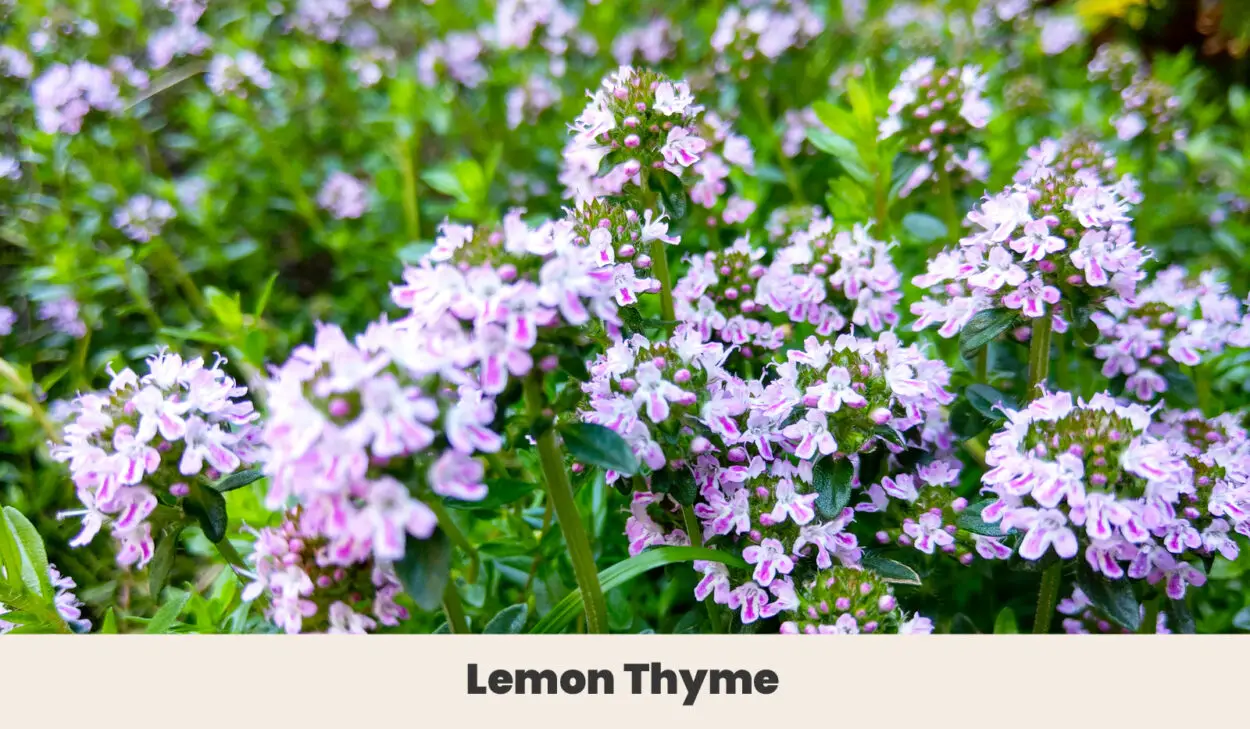
If you want to add a rich, lemon-scented aroma and deep green foliage to your garden, look no further than the lemon thyme plant. The plant doubles as a culinary herb, adding flavor to salads, meat, fish, and other dishes.
The Romans used to add lemon thyme to their bathwater to improve vigor and were also pinned by shoulders on their battle gear to portray strength and bravery. Lemon Thyme is a ground cover that grows well in full sun, so plant bright sunny location that gets more than 6 hours of sunlight per day.
| Botanical Name: | Thymus × citriodorus |
| Growth Rate: | Fast |
| Native Range: | Southern Europe |
| Hardiness Zones: | USDA 5 to 9 |
| Soil Needs: | Well-drained, dry to medium soil |
| Exposure: | Full sun exposure required |
| Blooming Period: | Early-mid to late summer (medium blooming period) |
| Water needs: | Weekly watering will suffice. |
3. Lavender (Lavandula angustifolia)
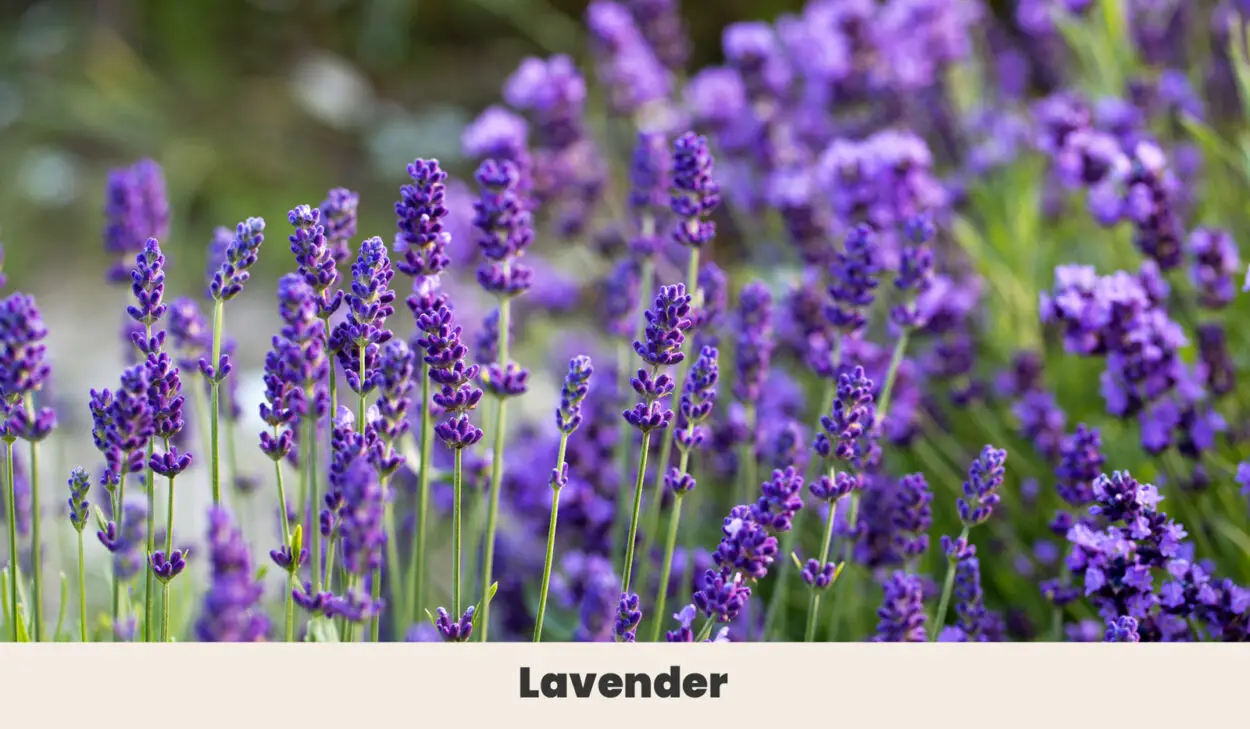
Here’s a fragrant purple perennial flower that will take time to grow, but believe me, you’ll love the spectacle of lavender plants blooming in the corner of your herb garden or scattered in bunches throughout the rock garden space!
The green-gray leaves of the plant accent other parental plants in the area, giving you an amazing view.
Historically, lavender was used to make incense and perfume by ancient Egyptian civilizations. The Romans and Greeks also added fragrant flowers to their herbal baths. Throughout the Middle Ages, this plant was considered a potent aphrodisiac.
Due to its distinct and calming fragrance, lavender is linked with serenity, devotion, calmness, and purity
| Botanical Name: | Lavandula angustifolia |
| Growth Rate: | Moderately slow |
| Native Range: | Europe |
| Hardiness Zones: | 5a to 9a USDA |
| Soil Needs: | Well-drained and dry soil |
| Exposure: | Full sun |
| Blooming Period: | Short; lasts 3 to 4 weeks |
| Water needs: | Water regularly until the plant is established. |
4. Larkspur (Delphinium)
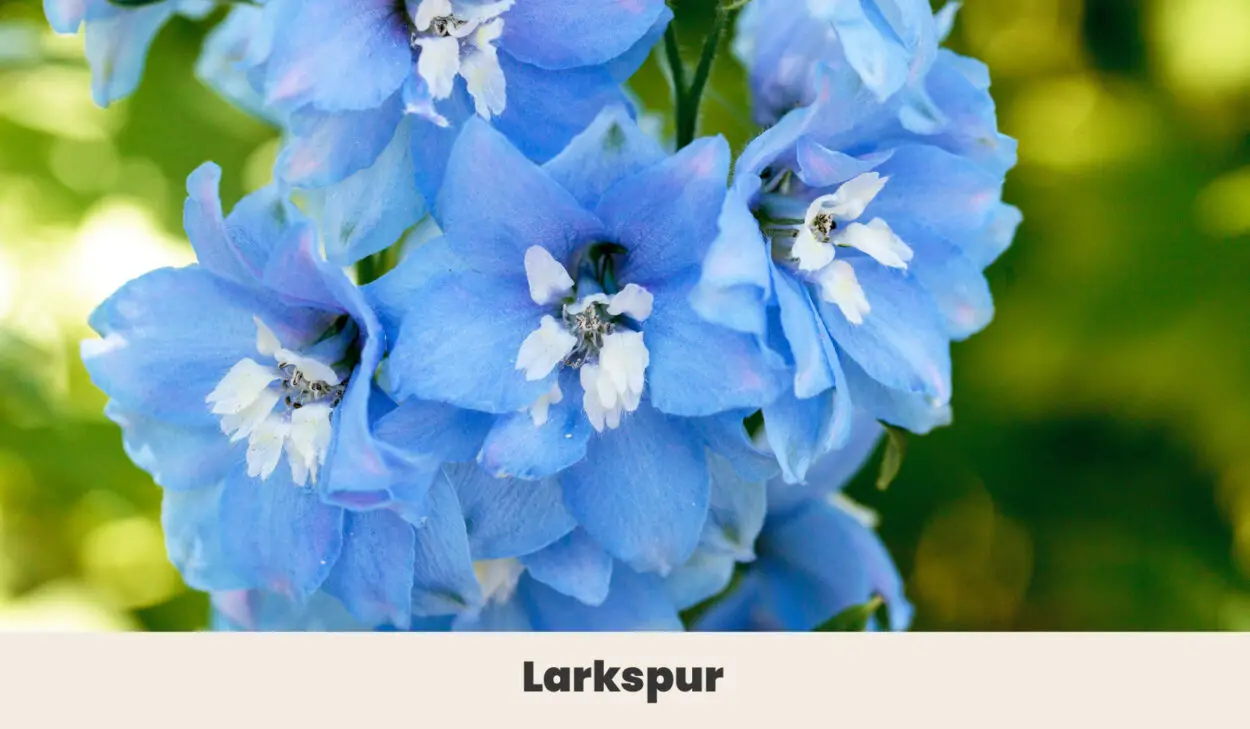
This perennial plant blooms into flowers of white, blue, or purple. Larkspur is a must-pick for traditional gardens as it can draw hummingbirds and butterflies, creating a serene view early in the morning.
Throughout different cultures, larkspur is believed to have potent powers that can ward off evil and is mostly planted near the home’s entrance for protection against evil. In England, Bathwater sprinkled with Delphinium powder was also believed to have the same powers of protection.
Larkspur should be planted in small groups or in an empty space to provide a green cover. You can also plant them on the borders of your rock garden to provide a cool effect.
| Botanical Name: | Delphinium |
| Growth Rate: | Moderate |
| Native Range: | Northern Hemisphere |
| Hardiness Zones: | 2 to 9 |
| Soil Needs: | Moist but well-drained soil |
| Exposure: | Full sun |
| Blooming Period: | Short blooming period, but some varieties of Delphinium can produce flowers throughout the summer. |
| Water needs: | Water regularly, especially in warm weather, to keep the soil moist. |
5. Love Lies Bleeding (Amaranthus caudatus)
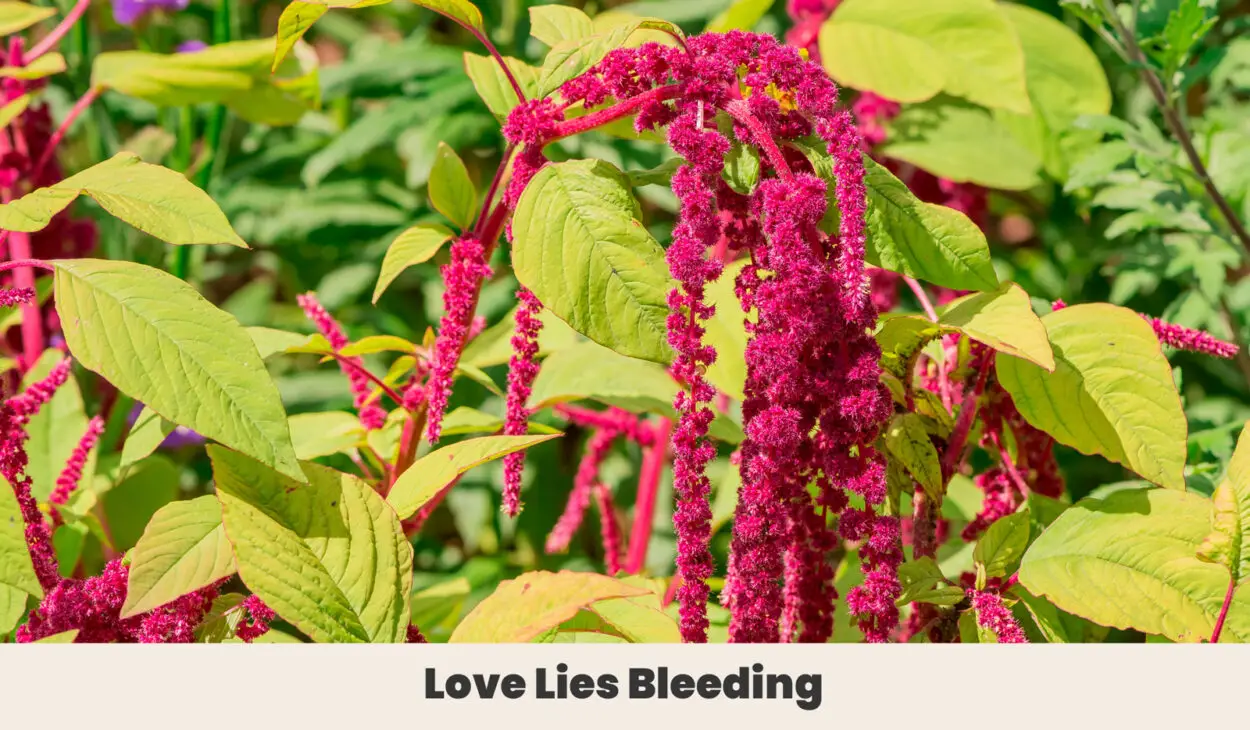
Known for producing blood-red and petal-free flowers growing on thin flower strands, Love-Lies-Bleeding is an excellent pick for gardeners looking to add bright and striking colors to their gardens.
The plant also has gold and purple-colored varieties, adding more color options to its portfolio.
Historically, the plant in the Victorian era represented hopelessness in love and relationships. However, from a religious perspective, it refers to the self-sacrifice of Christ.
As Love-Lies-Bleeding is a tall flowering plant, I prefer to add other tall flowering plants as well like the Solenostemon Redhead (Coleus), tithonia, or sunflowers for a vibrant and colorful garden display.
Love-Lies-Bleeding grows to an impressive height of 4 to 5 feet. These tall shoots produce drooping flowers, which are best seen when planted in hanging baskets, along garden paths, and edges.
| Botanical Name: | Amaranthus caudatus |
| Growth Rate: | Fast rate of growth |
| Native Range: | South America |
| Hardiness Zones: | 2 to 11 |
| Soil Needs: | Can grow well in average condition soil but should be well-drained and moist |
| Exposure: | Partial or full sun |
| Blooming Period: | Moderate blooming period (summer to fall) |
| Water needs: | Water regularly in warm temperature. |
6. Lotus (Nelumbo nucifera)
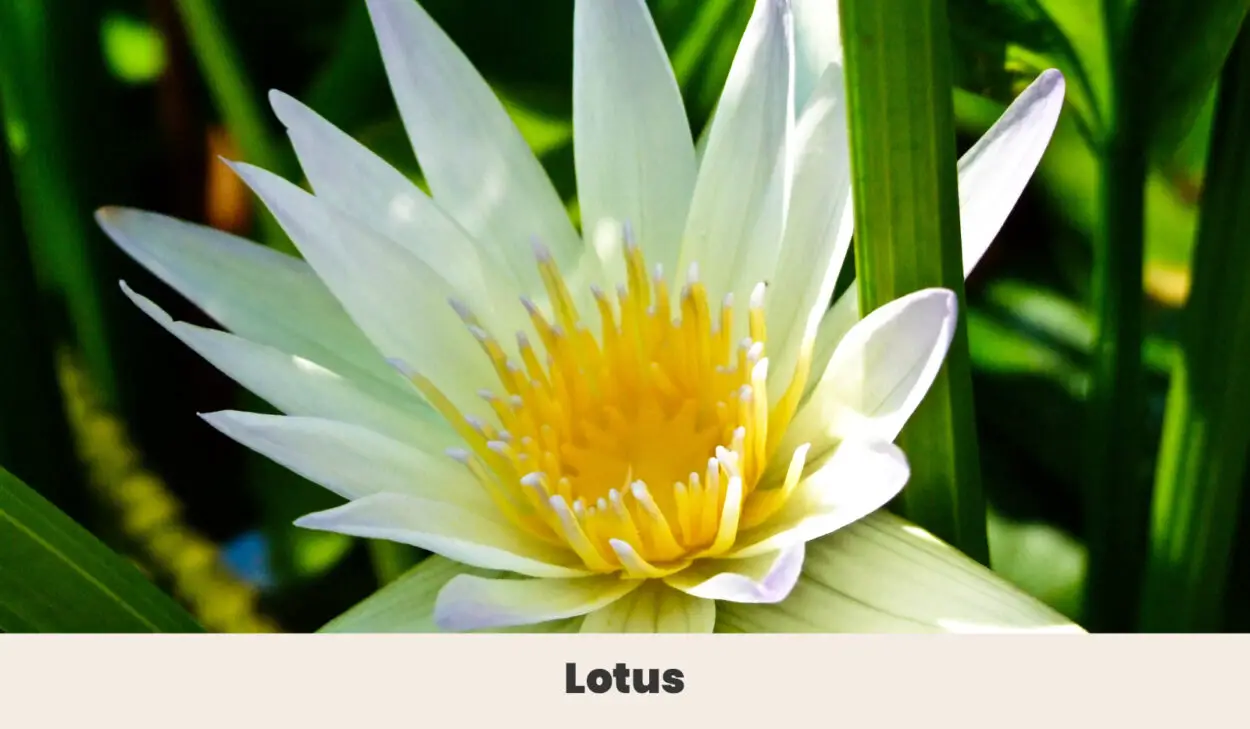
This aquatic perennial plant can become the centerpiece of your garden pond or a Japanese garden, providing a stunning view of blossoms that can open to more than 12 inches.
Lotus plants are rooted in the soil beneath the water body and grow to reach the water’s surface, producing flowers that float on the water.
The cultural significance of the lotus flower is seen spread across continents. Ancient Egyptian civilizations regarded the flower as a symbol of the sun, rebirth, and the creation of life. Likewise, the Hindu religion links the flower to divine perfection and is attributed to several gods they believe in. The flower is also revered as a symbol of purity in several Asian cultures.
Traditional Chinese medicine, Ayurveda, and folk medicine use the lotus plant’s seeds, flowers, and other parts to treat several ailments.
| Botanical Name: | Nelumbo nucifera |
| Growth Rate: | Slow |
| Native Range: | Asia |
| Hardiness Zones: | 4 to 10 |
| Soil Needs: | Can grow in several soil types |
| Exposure: | Needs full sun exposure |
| Blooming Period: | Short period |
| Water needs: | Submerge the potted plantings just below the water surface |
7. Love-in-a-Mist (Nigella damascene)
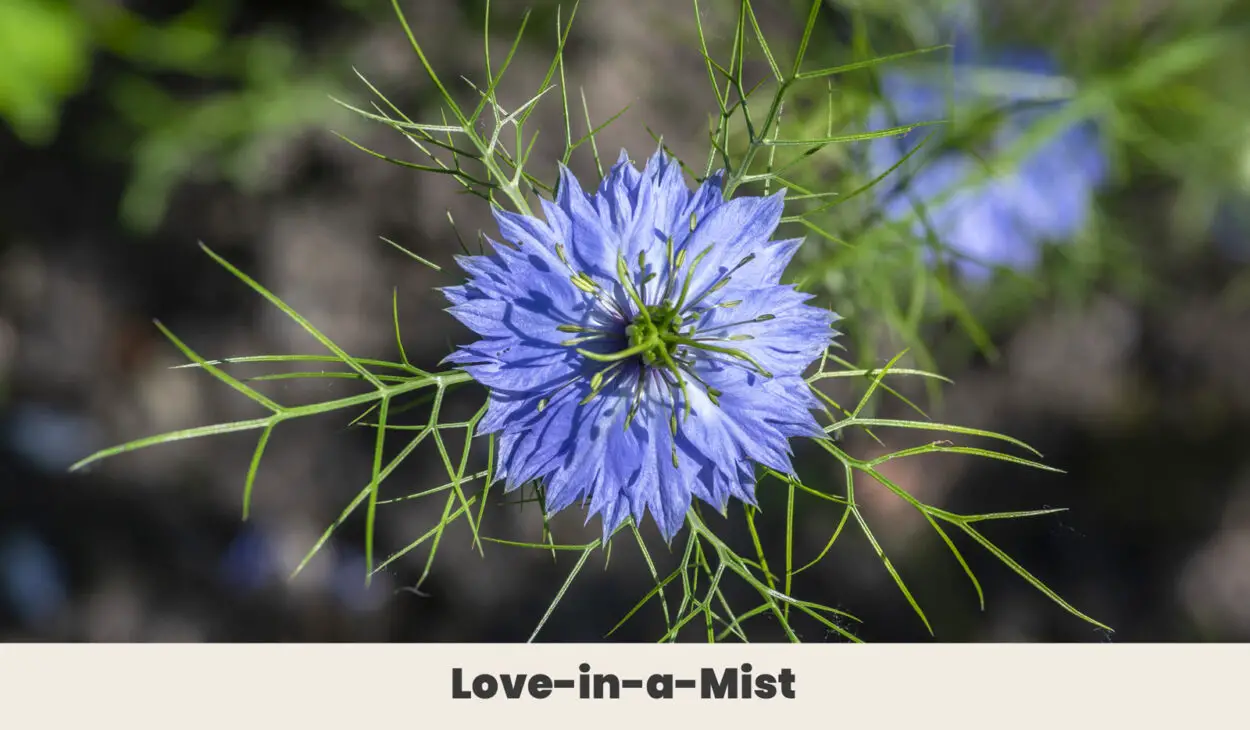
Love-in-a-mist is famous for its fennel-like foliage, which surrounds the fluffy and vivid flowers like a mist. You can find it in several colors, including purple, white, and pink. Love-in-a-mist is a common garden flower that has been planted in Europe since the 16th century.
The seeds of the plant have been used in folk medicine for centuries and are believed to cure bacterial diseases and improve vitality.
Plant them in your cottage garden or mix them with other smaller flowering varieties on borders to make vivid mixed beds.
| Botanical Name: | Nigella damascena |
| Growth Rate: | Fast |
| Native Range: | Southern Europe, North Africa |
| Hardiness Zones: | 2 to 11 |
| Soil Needs: | Nutrient-rich, moist, and sandy soil |
| Exposure: | Full sun |
| Blooming Period: | Moderate (8 weeks from July to September) |
| Water needs: | Water regularly as the plant loves moist but well-drained soil. |
8. Lily of the Valley (Convallaria majalis)
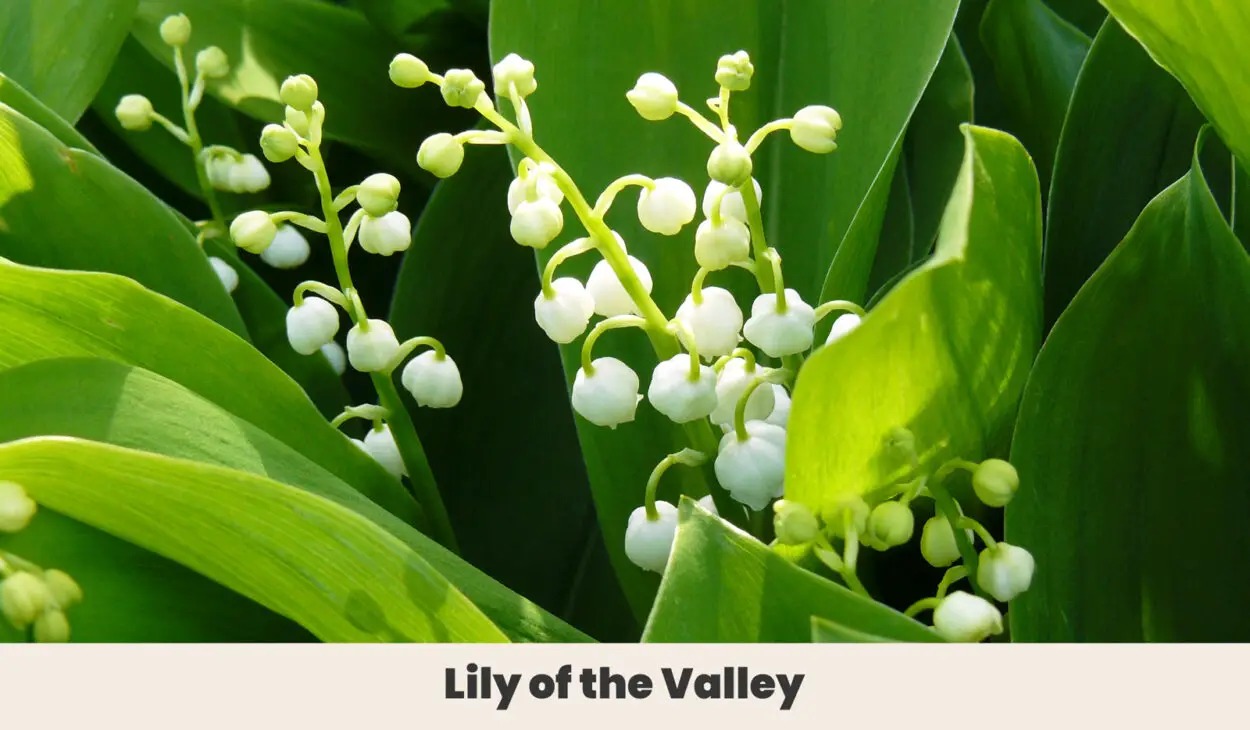
The Lily of the Valley is a herbaceous white perennial flower from Europe. It makes a great pick for a shade wildflower garden as it provides impressive foliage with elliptic green leaves and fragrant bell-shaped white flowers.
In the fall, you’ll also see the plant producing orange-red berries with seeds for self-propagation.
Its origins are associated with Eve as the legend says Lily of the Valley sprouted after Eve’s tears fell on earth as she was exiled from the Heavens. Most of the European region sees the plant and its flowers as a symbol of love, joy, and luck.
Although it’s a slow-growing plant, it can self-propagate to cover the ground in shady garden areas once established. Most gardeners plant it under trees or mix it with other flowering plants to create a unique mix of colors.
| Botanical Name: | Convallaria majalis |
| Growth Rate: | Slow |
| Native Range: | Europe |
| Hardiness Zones: | 3 to 8 |
| Soil Needs: | Well-drained soil of any type |
| Exposure: | Requires partial sun or shade |
| Blooming Period: | Short (3 weeks) |
| Water needs: | Only water to keep the soil moist and avoid overwatering |
9. Lady’s Eardrop (Fuchsia magellanica)
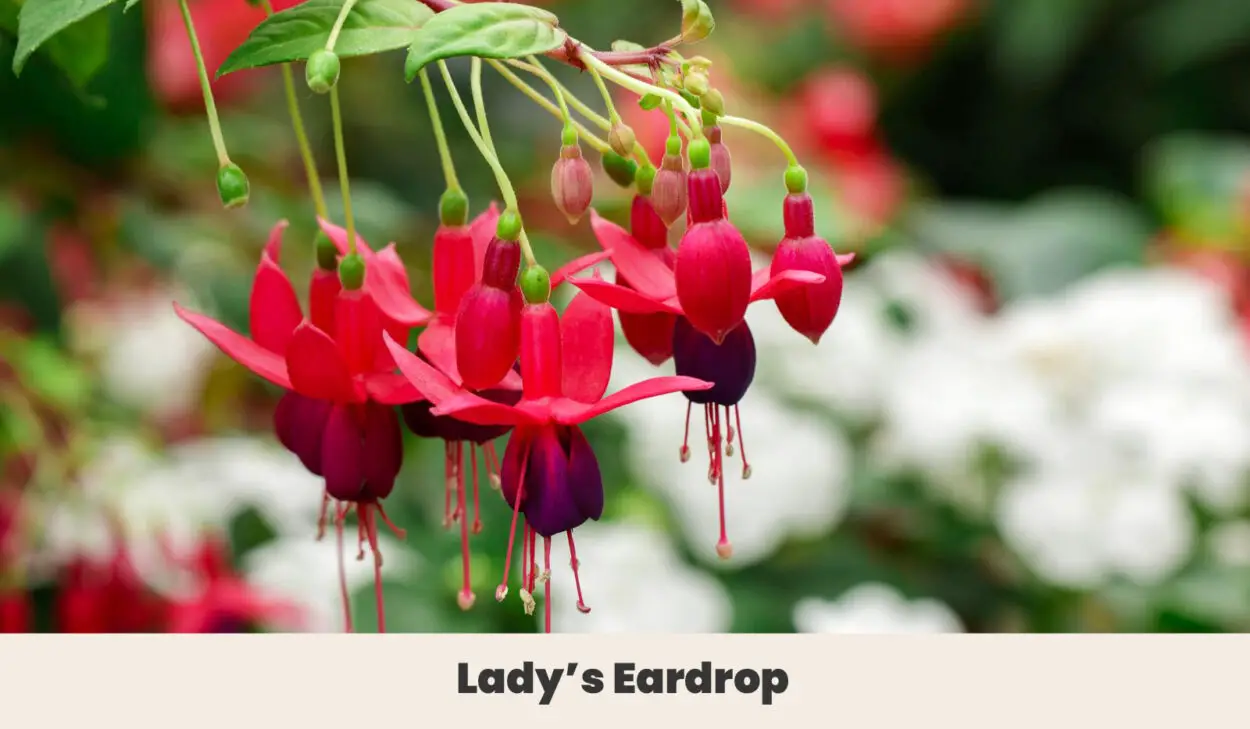
Most of the varieties you see of the Lady’s Eardrop plant are all developed from two main species. These woody plants produce cylinder-like Red flowers and petal-like extensions.
Fuchsia’s purple-red flowers are associated with feelings of confidence and self-assurance.
The plant’s pendulum-like flowers are best seen hanging from a basket or placed in areas like walkways, on the porch, or on the deck.
Besides growing Fuchsia in containers and placing it along the porch steps, you can grow it as a tree, providing spectacular foliage that compliments other flowering varieties in the garden.
| Botanical Name: | Fuchsia magellanica |
| Growth Rate: | Medium |
| Native Range: | South America |
| Hardiness Zones: | 10 to 11 |
| Soil Needs: | Loam or clay-based soils |
| Exposure: | Partial or full shade |
| Blooming Period: | Long (early summer to winter) |
| Water needs: | Water regularly in warm temperatures and once every 5 days in colder regions. |
10. Lady’s Bedstraw (Galium verum)

Native to Eurasia, the yellow weed-like plant produces magnificent 4-petaled flowers carrying a bright and glossy finish. These flowers are produced as clusters, creating an ambient aura with a sweet scent surrounding the garden space.
Historically, the Lady’s Bedstraw plant had several uses; for instance, the yellow dye was extracted from the yellow flowers, red dye from the roots, and other parts of the plant were used by cheesemakers to curdle milk.
The plant’s seeds are also used as a substitute for coffee and stuffed in pillows and mattresses to keep indoors fragrant.
If you want the feel of natural growth, choosing Galium verum is your best bet, as this plant is resilient to environmental changes once established.
| Botanical Name: | Galium verum |
| Growth Rate: | Fast |
| Native Range: | SouthWest Asia, Europe |
| Hardiness Zones: | 4 to 8 |
| Soil Needs: | Dry or moist soil |
| Exposure: | Partial or full sun |
| Blooming Period: | Moderate (July to September) |
| Water needs: | Water once a week. |
11. Lupine (Lupinus)

Holding a massive ornamental value, Lupines are tall purple or pink perennials developed in England in the early 1900s. The plant grows firm spikes that produce pea-like flowers.
The spike is densely packed with these sweet-scented flowers, which start blooming in early summer.
The plant was seen as a symbol of fertility, growth, and change in many civilizations dating back to 2000 years. This wildflower species and its hybrids are best used at the borders, can fill empty beds, and can even grow peacefully in the corner of your cottage garden.
| Botanical Name: | Lupinus |
| Growth Rate: | Slow |
| Native Range: | North America |
| Hardiness Zones: | 3 to 6 |
| Soil Needs: | nutrient-rich, well-drained, and moist soil |
| Exposure: | Full sun |
| Blooming Period: | Long (2 months) |
| Water needs: | Water regularly to keep the soil moist. |
Final Thoughts
These were the flowering plant varieties starting with the letter L. If you are in the plant-selection phase for your new garden, check out other recommendations to create a wonderful facade of flowers while providing a serene vibe of closeness to mother nature.

